The High Density Polyethylene (HDPE) pipes are quite importantly used in a number of engineering as well as infrastructural facilities due to the desired properties such as sturdiness, elasticity, and resistance to corrosion. This complete guide is meant to explain the complexity surrounding the topic of HDPE pipe sizes with specific reference to ADS Dual Wall, which are central to stormwater control and agricultural drainage, among other systems. By looking at size codes, definitions, and the practical merits of HDPE materials as applied in other industries, this article will help the readers appreciate how these pipes are made and why they are used in such a way. No matter whether you are an engineer, a contractor, or a designer, understanding these standards will enable you to apply proper means in your projects, enhancing efficiency and cutting costs.
What Are the Key Features of HDPE Pipes?
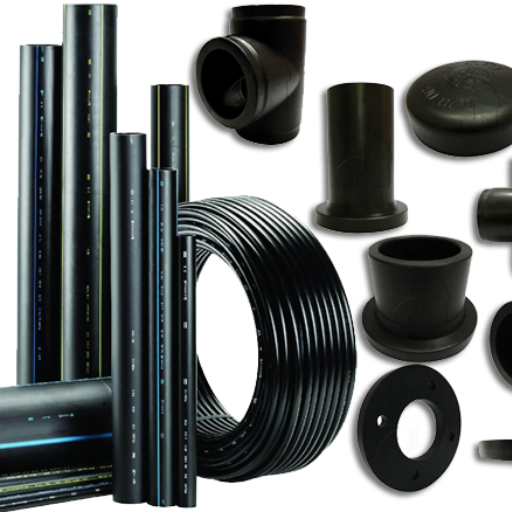
High-density polyethylene (HDPE) possesses unique physical characteristics inter alia, high strength-to-weight ratio and high toughness to temperature changes as well as impact, making such pipes suitable for harsh conditions H D P E pipes also have great resistance against chemicals and corrosion, further increasing their service life as compared to steel or concrete. They are also light and flexible, which makes them easier to transport and install, hence reducing labor and machinery costs. Moreover, the pipes are joined together by the application of heat, which produces weld-free joints, making the system more secure while minimizing the wastage of water; therefore, they are considered to be safe for a range of construction works.
What Makes HDPE Pipe Stand Out in the Market?
one thing I can assert is that HDPE pipes are among the leaders of the market owing to their great toughness and flexibility. Unlike conventional piping materials, such pipes also have good abrasion and chemical resistance, which is a beneficial characteristic owing to their elasticity. This guarantees durability and little service in a range of aggressive environmental factors, a factor that, without question, makes them unique. From a real point of view, lightweight structures save time during installation, while the effectiveness of the fusion-welded joints considerably lowers the overall expenses of the project. Most importantly, due to their recyclable nature and leak-proof designs, HDPE piping systems surely help uphold the principles of sustainability. All in all, due to their strength, efficiency, and environmental benefits, these pipes could be preferred in many scenarios.
How Does the Material Impact Performance?
I must state that the material composition of HDPE pipes impacts its effectiveness in various applications. To begin with, the polyethylene material has a high strength-to-density ratio, which enhances the strength and allows the pipe to maintain structural integrity when both external and internal pressures are applied. Secondly, the material does not easily change its shape or melt as it offers great resistance to heat, which would otherwise cause problems with the functioning of the HDPE pipes. Also, due to their chemically inert properties, the pipes will not degrade due to the chemicals that they may come into contact with in wastewater or industrial processes, thus increasing the lifespan of the pipes. Still, regarding the properties of the base material, the flexibility that HDPE material has allows the pipes to bend when pressure is applied, which allows the pipes to have low chances of breaking or leaking where there is ground movement or vibrational waves. Last but not least, due to the nature of HDPE, there will be no scale build-up, which will contribute to the improved flow of HVAC systems and a reduction in maintenance practices due to biofouling. In general, these properties—strength to density ratio, thermal resistance, chemical inertness, flexibility and non-reactivity—provide superior performance and functional efficiency than other pipe materials that are considered conventional.
What Are the Key Specifications to Consider?
There are a certain set of specifications while installing these pipes which are critical aspects related to the use of HDPE pipes.
- Diameter and Wall Thickness: The outer diameter of a pipe along with its wall thickness determines its depth. It is important to know this dimension since this can help the pipe tolerate flow and pressure. For large irrigation systems or other more extensive infrastructure, the various sizes of the HDPE pipes can be useful.
- Pressure Rating: Such information can be most useful in applications where the pipe’s capabilities can be maximized, as it is vital that one understands the pipe’s limits – expressed typically in pounds per square inch (PSI), the force that it is able to withstand. This feature helps when selecting the ideal pipe for a project, depending on the amount of pressure that working conditions will exert on the material in question.
- Material Density: The material density of the HDPE is of concern as its strength and flexibility are determined by it. There is varying density because there is an assortment of poly used to meet the desired range of such characteristics depending on how various components are to perform.
- Temperature Range: It is important first to be aware of the limits of temperatures that the pipe is capable of withstanding so it does not deteriorate or corrode. Its target range temperature is qualified because it can be exposed to a variety of temperatures, and HDPE pipes are effective in such applications.
- Chemical Resistance: One of the most desirable traits of HDPE pipes is the fact that they are able to withstand many chemical substances. This trait can be very useful in situations where the pipes would come into contact with corrosive materials potentially hampering the pipe’s lifespan.
- Joint Type: The full-length integrity and efficiency of buried HDPE pipes depend heavily on the installation techniques such as fusion welding to join pipes. Leak-proof joints are essential for maintaining system efficiency and preventing loss.
Taking these essential parameters into account—diameter and wall thickness, pressure rating, density of the material, temperature limits, resistance towards chemicals, and the type of joint—one makes certain that selection of HDPE piping is suitable for the requirements of the given application in the most efficient manner.
How Does ADS Pipe Compare to Other Products?
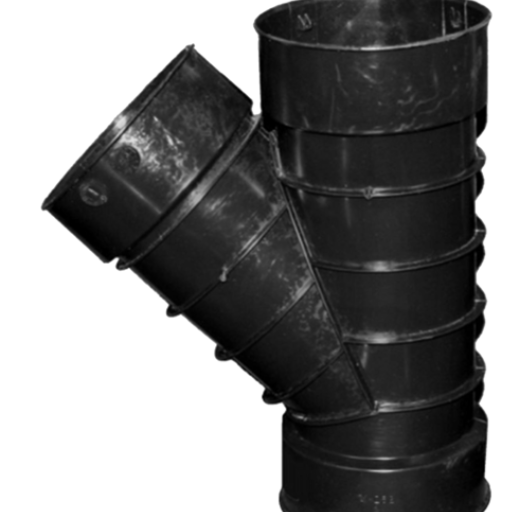
I confirm that ADS pipes have several distinct merits when compared with other products in the market. Most importantly, ADS pipes are able to outperform other types of pipes due to high levels of drainage design and structural characteristics, the two most critical elements in a high-performance drainage system. Due to the efficacy of their materials, pipes utilizing high-density polyethylene in their structure are lightweight and quite strong. This reduces transportation machinery and labor requirements during installs, enabling reasonable costs for projects. Moreover, the ADS pipes can be placed in many different environments and maintain their functional capacity and their shape which broadens their use across various fields. Their modern designs also reduce maintenance by eliminating chances of clogging and promoting faster movement of water. In comparison to some of the conventional adoptives like concrete and metal, ADS Pipes represent a good investment in terms of time and money as well as allow for cost-efficient and eco-friendly projects in the future.
What Sets ADS Pipe Apart in Terms of Design?
Having mastered the nuts and bolts of pipe design, I can say that there are several distinctive and fundamental design features of ADS pipes. First and foremost, their outer shell structure is designed to enhance strength while keeping the profile light, which makes it easier to withstand ground pressure and such external requirements effortlessly. Second, the inner surface of the pipe is designed to minimize friction with the flow of water, which in turn increases the flow capacity while decreasing the chances of obstruction. Third, the pipe is manufactured from high-density polyethylene, which is pliable and withstands the elements, including frost and soil shifts. Fourth, the joint systems are sophisticated as they incorporate advanced designs such as bell-and-spigot or watertight push-on joints, making it easier to join sections safely without leaks and thus require less time and effort for a full installation. Last but not least, its design was also reinforced with UV stabilizers so it doesn’t degrade after prolonged exposure to sunlight. Therefore, each range – the corrugation, the UV stabilized rubber, the high-density polyethylene, the advanced joint systems, and the smooth inner wall provide structural integrity to a well-engineered ADS pipe. As a result, this unique design promises applications that require efficiency, reliability, and longevity of the pipes in various kinds of applications.
What Performance Benefits Does ADS Offer?
ADS pipes are to be considered the best pipe option due to several key performance advantages they offer. For starters, excellent drainage is ascertained as the result of their purposeful design features. This guarantees optimal management of water so that flooding and waterlogging do not occur. The second consideration is the fact that the pipes are both strong and lightweight, hence the simplicity of the installation processes. This not only saves time but also reduces costs since many pieces of heavy machinery and labor are not required. Additionally, ADS pipes have good performance across a myriad of environments, whether in urban areas or in rural areas, because they are resistant to many factors. Last but not least, in their design, there are features that prevent blockage, thus reducing maintenance work and ensuring uninterrupted performance. With respect to drainage effectiveness, lightweight and strong, environmental resistance, and maintenance-free constructs, it is easy to understand why ADS pipes can be trusted and used for many undertakings.
What Are the Common Applications for HDPE Pipes?
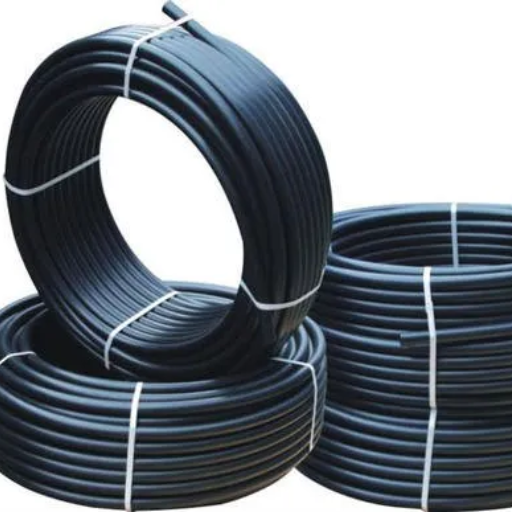
HDPE pipes find numerous applications owing to their characteristics and performance. Most importantly, these pipes are widely installed in water and wastewater systems where they offer excellent resistance to corrosion or chemical attack and, therefore, durability. Furthermore, HDPE pipes are also well suited for gas distribution systems since they can transport gas under high pressures and in adverse environmental conditions. They are also used in agriculture irrigation and drainage systems because they are easy to handle and quick to install. Also, HDPE pipes are used in industrial pipe systems where chemical resistance is critical and also in the electrical industry for shielding underground telecommunication cables. Every one of these applications is afforded specific benefits by HDPE, highlighting the diversity of the material’s qualities and their utility in different industries.
How Are HDPE Pipes Used in Drainage Systems?
HDPE pipes are very important in drainage systems because of their unique properties. To begin with, their flexibility means that they can conform to different terrains, thus minimizing the chances of damage occurring due to soil movements and other external forces. Their smooth internal surfaces increase flow efficiency24. Rendering is highly unlikely to experience blockage, thereby enabling the drainage system to function effectively at all times. On top of that, because of the chemical resistance nature of HDPE, these pipes do not react with many substances present in drainage systems, which are, in most cases, acidic or alkaline effluents. Their light weight makes them easier to handle and install thereby reducing overall project costs and time. Such characteristics make HDPE pipes an appropriate option not only for major construction works and infrastructure projects but also for small, centralized drainage systems, and they demonstrate their worth throughout their use in various cases.
What Industries Rely on HDPE Pipes for Infrastructure?
I have observed several sectors become more dependent on using HDPE pipes for infrastructure purposes, mainly because of their strength and versatility. Allow me to explain:
- Municipal and Urban Planning: In water supply and sewerage systems, there is a widespread use of HDPE pipes in municipal and urban areas. Their resistance to corrosion and abrasion makes them suitable for the construction of such services.
- Gas Distribution: The gas industry employs HDPE pipes since they are able to withstand internal pressure while being flexible enough to accommodate the movement of the soil around them making delivery of gas safe.
- Agriculture: Nowadays, the most advanced strategies for irrigation systems are unthinkable without HDPE pipes. Their ruggedness and simplicity of fitting contribute to the efficient distribution of water on vast sele areas thus enhancing farming activities.
- Mining and Industrial Applications: For corrosive places such as slurry and industrial effluent transportation, HDPE pipes are the most suitable due to their outstanding chemical stability and toughness enabling them to resist abrasive environments.
- Telecommunications: With the growth of telecommunication lines, the use of HDPE pipes facilitates the reliable protection of underground cables and it also has an advantage of flexibility and strength against environmental stressors.
Every application here stated capitalizes upon those specific characteristics of HDPE: durability, flexibility, corrosion resistance and ease of installation. These characteristics combined explain why such pipes have gained enormous popularity and usage across industries.
Are There Alternative Uses for HDPE Pipes?
HDPE pipes are highly adaptable and can be employed in many creative ways that are not restricted to their typical usage. This is how:
- Stormwater Management: When it comes to urban stormwater pollution, erosion, and flooding threats, straightening up water conveyance is much needed. Because of their inflexible structure, they can fit into any shape without breaking even under tremendous water pressure.
- Aquaculture: The necessity of these polymer geosynthetic devices extends into a true inducing role in aquaculture through drainage and water supply systems. Polyethylene is a chemically passive substance and thus does not influence aquatic environments.
- Landfill Systems: The critical properties of high-density polyethylene polymers concerning landfill waste leachate, such as inertness to many hazardous constituents of waste, permit such plastic pipes to be utilized as leachate layer pipes of landfill sites, thus preserving the soil under and around the landfill.
- Cooling Systems: Plants use these high density polyethylene pipes in closed loop water cooling systems. Their structure integrity is crucial because heat-resisting materials tend to expand when contacting with circulating coolants.
The fact that HDPE pipes have additional applications is indicative of their adjustability to many needs which is due to some major properties such as chemical resistance, durability, flexibility, and environmental resistance. This ability to perform in many different environments makes them an important part of a lot of opportunities besides basic infrastructure requirements.
How Are Installation and Maintenance Handled?
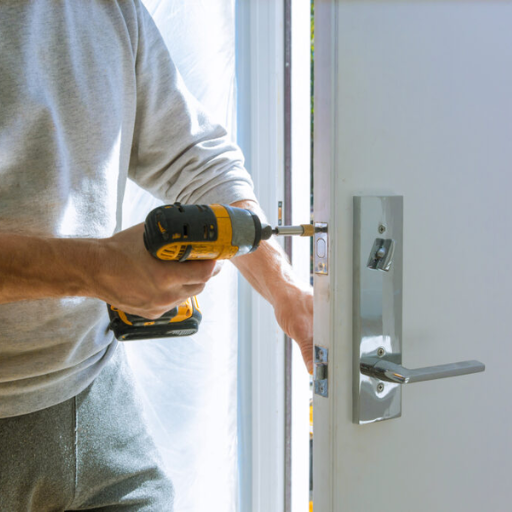
I have worked with HDPE pipe systems for many years and witnessed how easy and practical its installation and maintenance is. The installation starts with an accurate evaluation of the site, followed by ditching, which prepares the pipes for laying. Because of these characteristics, they are easy to handle, transport, and facilitate the placement of the pipes, saving a lot of labor time in the process. The most common method of joining is heat fusion, where the pipes are melted and fused together at the joint, eliminating the risk of leakage and improving the integrity of the system. To my knowledge, HDPE pipes will also require little maintenance because they are resistant to scaling and corrosion. Such maintenance only involves an occasional inspection for indicators, but the requirement for maintenance is so low that it can easily equate to a reduction in the operational cost. Great. Therefore, it is no surprise that HDPE pipes are so popular in the industry, given how easy they are to install and require almost no maintenance.
What Are the Best Practices for Installing HDPE Pipes?
following some of the practices during installation brings about desirable results. I would like to take you through the following:
- Site Assessment: Before installation starts, it is always recommended that a site environment assessment is conducted. This helps determine factors such as site soil, the degree of obstruction, and the required depth for trenching. Detailed site assessment forms the base of effective installation procedures.
- Trench Preparation: Trenching must be carried out to suit the pipeline requirements. Therefore, it is necessary for the trench to be of adequate depth and width and be constructed in such a way that minimal or no settlement will occur even after sufficient backfilling has been applied.
- Handling and Transportation: Since HDPE pipes can be easily damaged, it can be carried and transported with due care. This is because HDPE has excellent performance, although if they are handled roughly, they will be swiped or caved, and these can ruin future performance.
- Joining Through Heat Fusion:The most effective option when it comes to joining HDPE pipes is through heat fusion since it offers a perfect fit. The fusion technique consists of heating the ends of the pipes until softening or melting occurs and then forcing them together. If two parts are being fused, they will not leak unless too much pressure is applied. During this step, alignment became critical to avoid joint failure at the intersection.
- Quality Control: During the installation stage, maintaining standards is paramount and that requires undertaking constant quality checks. In terms of determining successful pipe installations, it is paramount to confirm that there is sufficient fusion of the joints, that the pipes are aligned properly, and that all the joints have been properly integrated.
- Backfilling: Backfilling becomes important once the piping has been completed. There should be no over-size stones or other materials within the backfill that could place stress on the pipes. The pipes and their fittings would be in more secure positions if the fill material was compacted.
When it comes to the exact accords that are provided The principles as provided greatly assist the HDPE pipeline against degradation and this can be easily adapted to suit the longevity of performance and the maintenance issues to be less demanding later on.
How Often Should Maintenance Be Conducted?
I would advise performing maintenance on HDPE pipes on a scheduled basis so as to extend their life and enhance their effectiveness. This is necessary because there are low maintenance requirements associated with HDPE pipes. Periodic inspection allows for early detection of things that could potentially be a problem. Following is a simple guideline in terms of maintenance intervals and checks.
- Visual Inspection: A visual examination should be conducted on an annual basis. Such an annual visual examination helps in noticing some external features such as scratches and dents which could have developed over time.
- Leakage Checks: Regular leakage watches every three months are advisable. This is because in the case of an HDPE Pipe where heat fusion is used to join two pipes together, any sign of leakage may be an indication of a joint convergence which ought to be repaired.
- Pressure Testing: There is a need to conduct pressure tests every six months. The purpose is to verify that the pipelines are able to withstand the operational pressures for which they are designed. Variations from that may be indicative of areas which require attention.
- Chemical Resistance Review: An annual assessment of their chemical resistance should be performed if the HDPE pipes are employed in areas that come in contact with acids or chemicals to prevent deterioration. This is crucial in certain sectors, such as aquaculture and landfill systems.
- Structural Integrity Inspection: There must be an all-inclusive evaluation of the structural integrity of the pipe systems after every two years. This includes finding warping and other external forces acting on the pipeline.
With the proper performance of these maintenance activities, you guarantee the integrity and functionality of the HDPE piping system and the safety of its use, thus reducing any major repairs or system inactivity within the future.
What Specifications Should You Know About ADS HDPE Pipes?
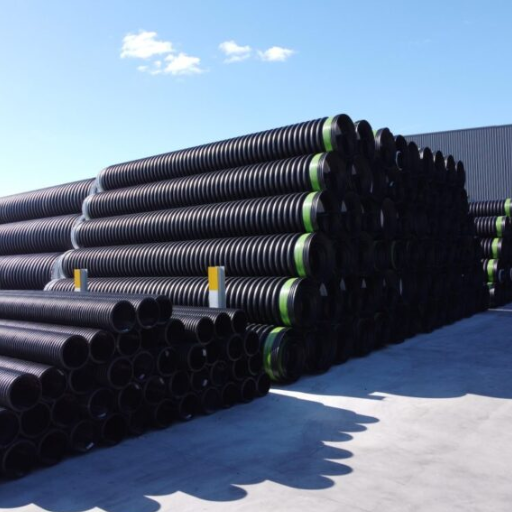
The critical requirements for ADS HDPE pipes must be fully comprehended as they shall serve the needs of your project – as stated by an industry professional. As it has been known, ADS HDPE pipes are characterized by a high-density polyethylene composition, which enhances their flexibility and durability. Typical specifications include a diameter range, which is usually between 3 to 60 inches, making it usable in numerous areas ranging from agricultural practices to construction. The wall thickness of these pipes is determined by a standard dimension ratio or SDR, which ascertains that pipes can be applied in circumferences of different ranges, thus pressure of differing values. The engineering of these pipes is also directed by ASTM and AASHTO standards, which ensure they withstand different environmental conditions without losing their performance. In addition to this, kullanımda da engelleyen ADS HDPE pipes are also noted for an interior surface that is smooth enough, hence reducing the friction and increasing the rate of flow. Mastering these specifications allows one to carry out the appropriate installation of ADS HDPE pipes in various infrastructural constructions in a manner that would allow the pipes to be operational for a long time and be compliant with the applicable thresholds.
What Are the Available Sizes and Lengths?
It is imperative that, as an industry specialist, one comprehends the various dimensions of ADS HDPE pipes as they serve a wide range of applications. From serving small-scale residential purposes, to large scale industrial working, we offer our ADS HDPE pipe ranging 3 inch to 60 inch in diameter. About length, these pipes are generally produced in standard lengths of twenty, forty, or fifty feet. However, custom lengths are available to meet particular project requirements as well. The availability of these size and length variations ensures that the right specifications can be matched precisely to the project needs, thus optimizing the installation time and efficiency of the system.
How Do ADS Pipes Meet ASTM and AASHTO Requirements?
In order to guarantee compliance of ADS HDPE pipes with strict requirements of the following, including but not limited to ASTM (American Society for Testing Materials) and AASHTO (American Association of State Highway and Transportation Officials), the following characteristics should be taken into account:
- Material Quality: High-density polyethylene material is used for manufacturing ADS HDPE pipes. This material clearly states that it has the requisite strength and elasticity for usage in pipe and structures and can withstand the various loads exposed to it as prescribed by ASTM and AASHTO standards.
- Dimensional Accuracy: ADS HDPE pipes which by construction have critical diameters and even wall performance, thickness are processed with the correct dimensions. This is important so that once installed, the pipes will not double act by expanding into unacceptable dimensional scope and weaken structural stability.
- Pressure Capacity: ADS pipes are structurally designed for pressure as confirmed by the suite of tests as outlined by ASTM. This ascertains strength with the application context such as in drainage, sewage and infrastructural piping systems among others.
- Durability under Environmental Conditions:The pipes are required to be resistant against the environmental stress crack, UV and chemical attack for durability purpose as per AASHTO. This assures that the pipes will serve for a fairly long period without deformation and will stay operational in different environmental circumstances.
- Flow Efficiency: More often than not, internal surfaces of ADS HDPE pipes are structured in a way that they are smooth selling and therefore, do not add too much friction thus increasing flow. Therefore, such a smooth surface makes the pipes conform to hydraulic performance standards and allow for movement of fluid with minimal losses.
In meeting such parameters, it goes without saying that ADS HDPE pipes consistently meet the requirements set forth by both ASTM and AASHTO and thus would always be dependable and useful in construction across various infrastructures.
Reference
- PE4710 HDPE Pipe Sizes – This source provides a detailed chart of HDPE pipe sizes and pressure ratings.
- ADS N-12 HDPE Pipe Dimensions & Sizes Chart – Offers specifications for ADS N-12 pipes, including dimensions and available sizes.
- JMM High-Density Polyethylene (HDPE) PE4710 Specifications – Provides specifications for HDPE pipes, including standard lengths and marking details.
Frequently Asked Questions (FAQs)
Q: What are the standard sizes available for ADS Dual Wall HDPE pipe?
A: ADS Dual Wall HDPE pipes are available in a variety of sizes, typically ranging from 4 inches to 60 inches in diameter. For specific dimensions, please refer to the detailed specifications on the manufacturer’s website.
Q: How does the smooth interior wall and corrugated exterior design benefit ADS Dual Wall pipes?
A: The smooth interior wall and corrugated exterior design of ADS Dual Wall pipes offer exceptional hydraulics and strength, providing superior corrosion and abrasion resistance. This design ensures efficient water flow and durability.
Q: What is the significance of the ADS N12 in drainage pipe applications?
A: The ADS N12 drainage pipe offers exceptional hydraulics and strength due to its smooth interior wall and corrugated exterior. It is widely used for its superior corrosion and abrasion resistance, making it ideal for various drainage applications.
Q: Can ADS Dual Wall pipes be used in accordance with local drainage regulations?
A: Yes, ADS Dual Wall pipes can be used in accordance with local drainage regulations. It is advisable to consult with a local representative to ensure compliance with applicable rules and standards.
Q: What is the warranty and liability policy for ADS Dual Wall pipes?
A: ADS provides a warranty for its Dual Wall pipes, covering defects in materials and workmanship. For detailed warranty terms and liability information, please contact the sales representative or refer to the warranty page on the website.
Q: Are there any additional installation requirements for the ADS Dual Wall N-12 series?
A: Installation of the ADS Dual Wall N-12 series should follow the manufacturer’s guidelines to ensure optimal performance. Additional installation requirements may apply depending on site conditions, so it is best to review the installation manual or consult with a professional.
Q: Where can I find a review of ADS Dual Wall pipes?
A: Reviews of ADS Dual Wall pipes can typically be found on the manufacturer’s website or on third-party review sites. These reviews provide insights into the performance and reliability of the products.
Q: Does the ADS Dual Wall pipe package include bell and plain end options?
A: Yes, ADS Dual Wall pipes are available with both bell and plain end options to suit different installation needs. For more details, please refer to the product specifications or contact a sales representative.
Q: What browser is recommended for accessing the ADS website for pipe specifications?
A: For the best experience accessing the ADS website for pipe specifications, please use modern browsers like Google Chrome, Microsoft Edge, or the latest version of Internet Explorer. This ensures full compatibility with the site’s content.





